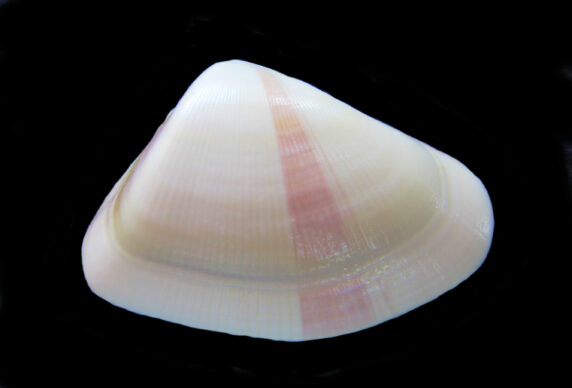 Pitted Donax Clam Shell, Donax punctatostriatus
Pitted Donax Clam Shell, Donax punctatostriatus
Donax Clams of the Donacidae Family are also known as Bean Clams, Coquina Clams and Wedge Shells. They are small to medium sized clams that have a triangular profile, with a few having a more elongated outline. Both valves are equal is size and shape (equivalve). Their anterior end is long and narrowly rounded and the posterior end is steeply sloping. The exterior of the shell may be smooth or sculpted with fine radial ridges. The exterior surface of the shell is shiny; the interior is smooth and shiny and the interior margin may be serrated.
Donax Clams are found intertidally and one of the most commonly found shells on sandy, surf-swept, beaches. They are well adapted to the high energy surf zone in that they are quick burrowers and can “surf” when needed, using wave energy to move quickly. To surf, these clams use their foot muscle to launch off the bottom, into the water column, extend their siphon and foot which is used as a sail to push up the beach. They are unique in this ability. The Donax Clams are suspension feeders, eating plankton that is suspended in the water column. In turn they are preyed upon by shore birds, crabs, fish, and mammals, including humans.
Donax Clams are found worldwide, primarily in tropical and subtropical waters. There are fifty species in the Donacidae Family of which seven are found along the coastlines of the Baja Peninsula.